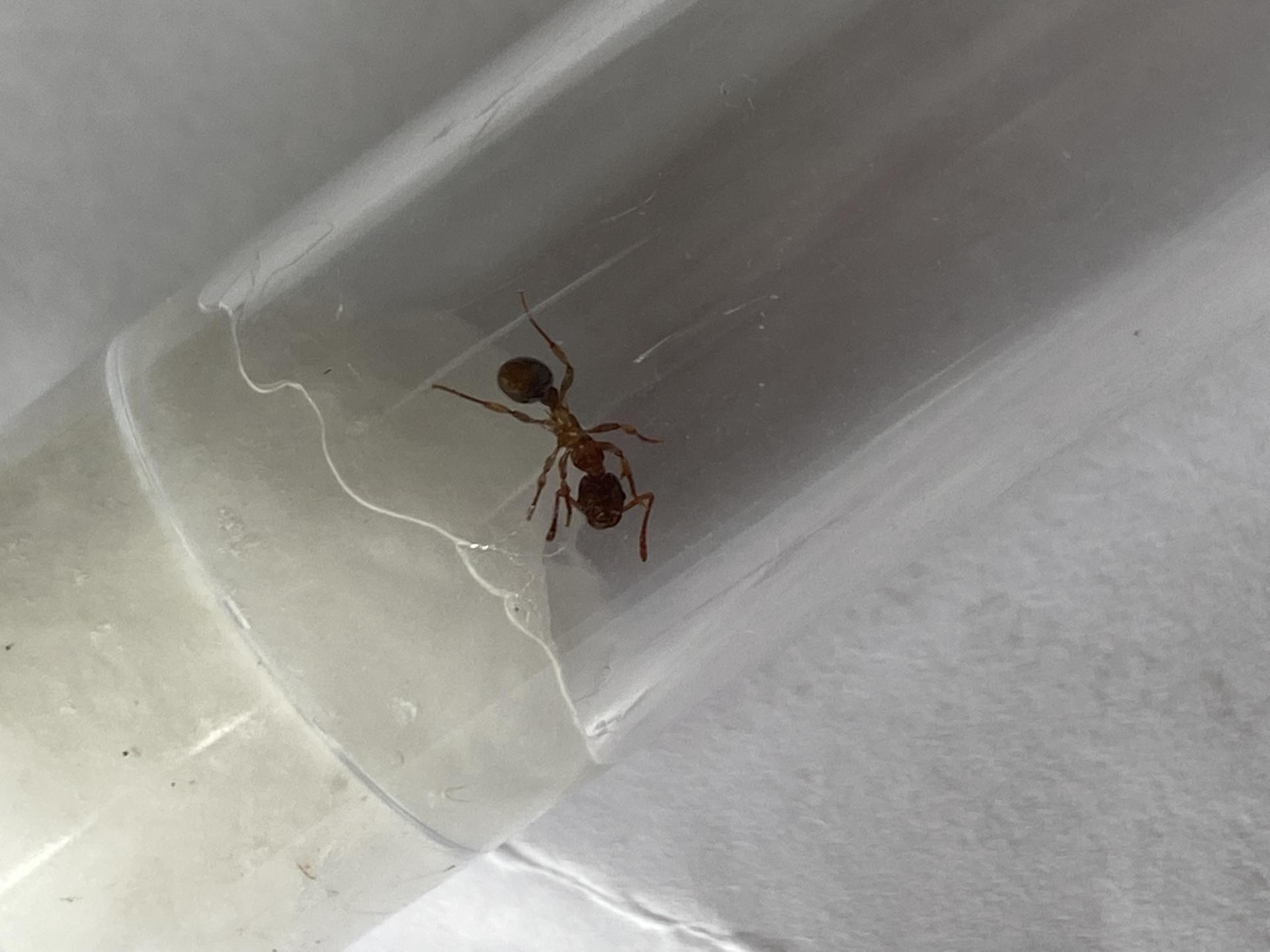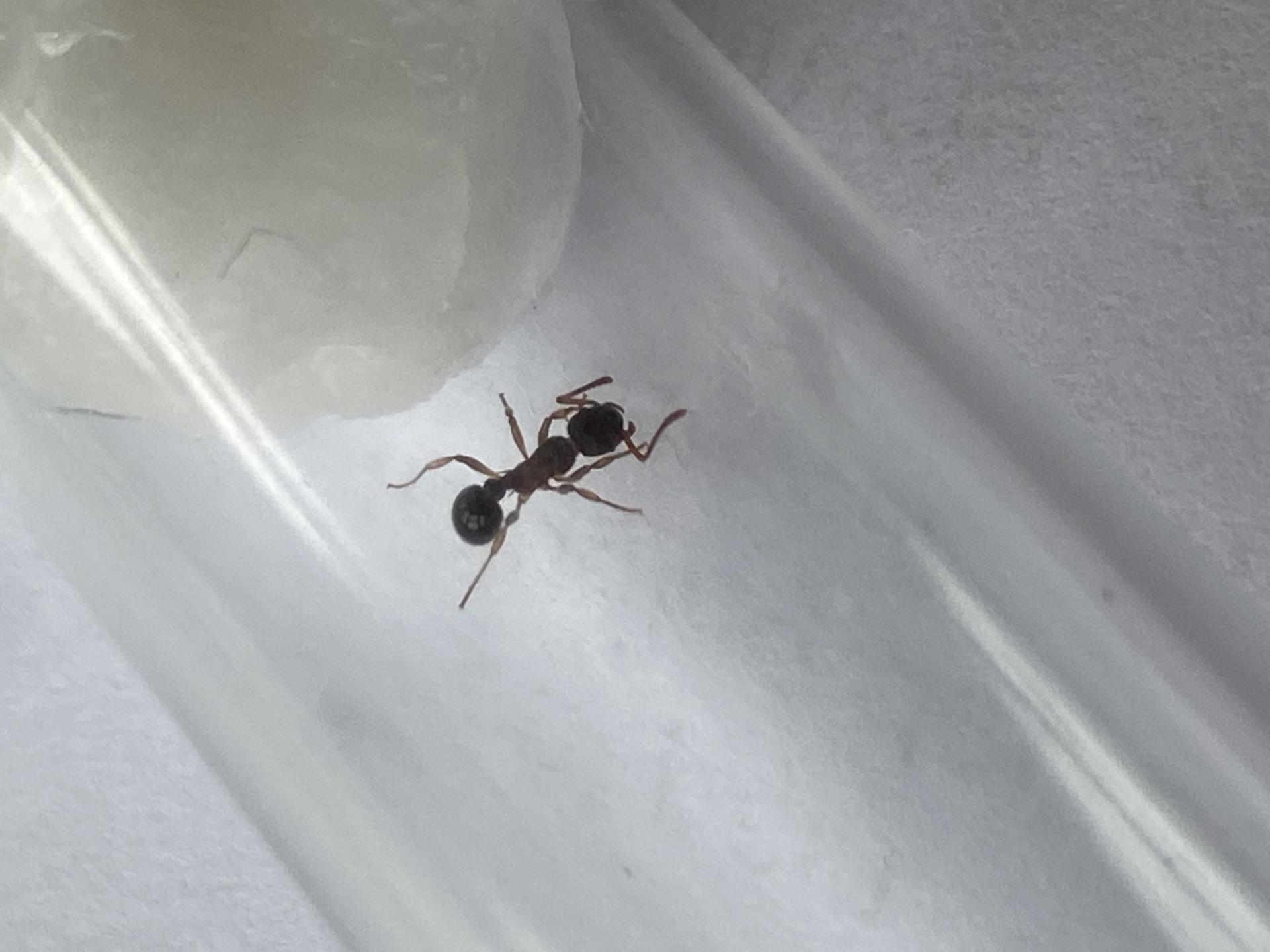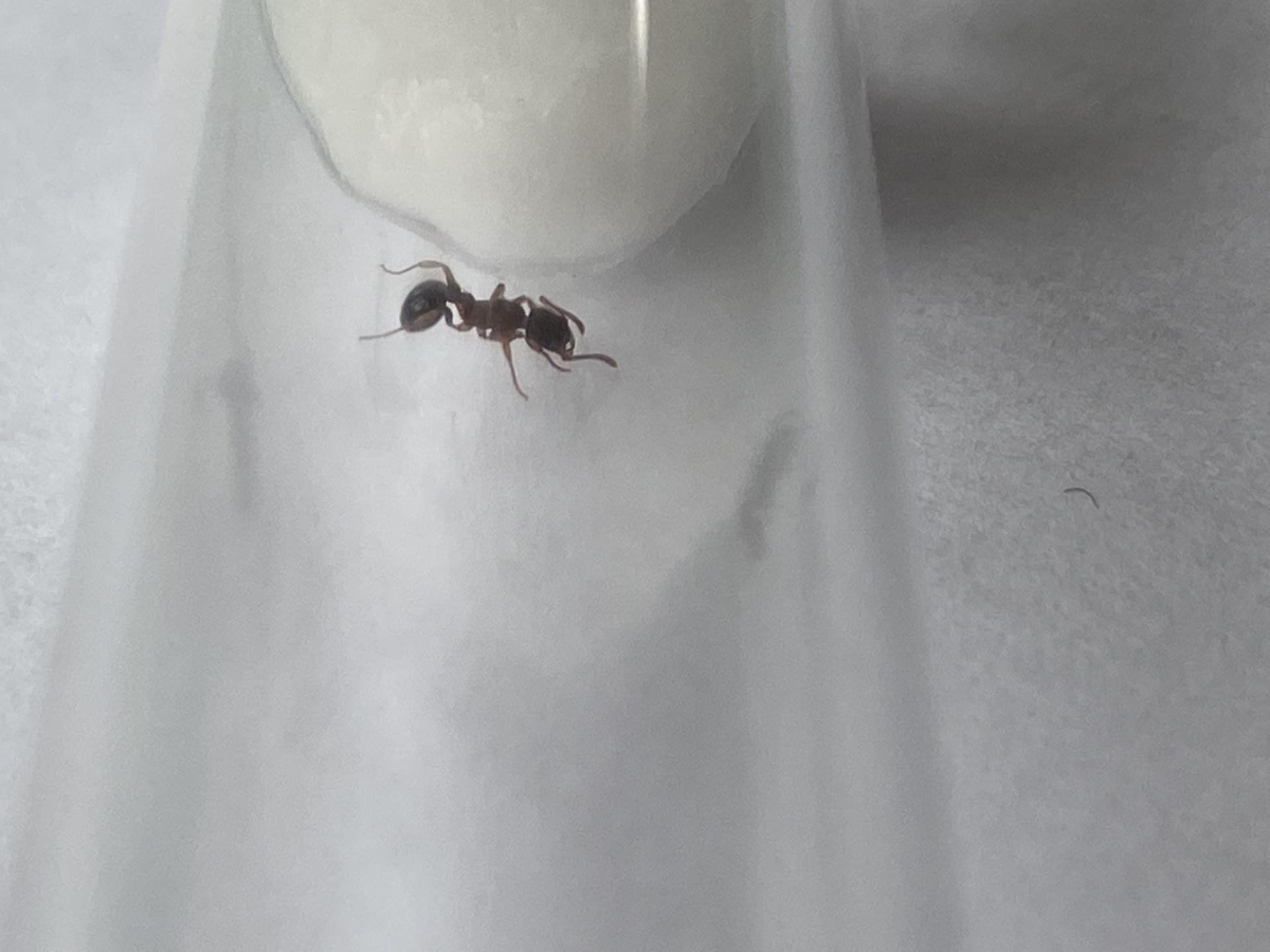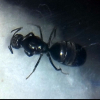- Formiculture.com
- Forums
- Gallery
- Members
- Member Map
- Chat
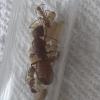
Is this a queen?
Started By
Ottercl
, Aug 20 2021 10:07 AM

2 replies to this topic
#1
 Offline
-
Posted August 20 2021 - 10:07 AM
Offline
-
Posted August 20 2021 - 10:07 AM
1. Location (on a map) of collection: Norwell, Massachusetts, USA
2. Date of collection: August 20, 2021
3. Habitat of collection: Suburban
4. Length (from head to gaster): 5 mm
5. Color, hue, pattern and texture: Reddish black with a darker head and gaster, orangish legs a rough looking texture
6. Distinguishing characteristics: Smaller gaster (semi-claustral?), 2 petiole nodes
7. Distinguishing behavior: No
8. Nest description: N/A
9. Nuptial flight time and date: August 20, before 2:00 pm
2. Date of collection: August 20, 2021
3. Habitat of collection: Suburban
4. Length (from head to gaster): 5 mm
5. Color, hue, pattern and texture: Reddish black with a darker head and gaster, orangish legs a rough looking texture
6. Distinguishing characteristics: Smaller gaster (semi-claustral?), 2 petiole nodes
7. Distinguishing behavior: No
8. Nest description: N/A
9. Nuptial flight time and date: August 20, before 2:00 pm
- Antkeeper01 likes this
Ants for sale in MA: https://www.formicul...-massachusetts/
Keeper of:
-Camponotus pennsylvanicus
-Camponotus chromaiodes
-Camponotus castaneus
-Camponotus americanus
Journal: https://www.formicul...onotus-journal/
Keeper of:
-Camponotus pennsylvanicus
-Camponotus chromaiodes
-Camponotus castaneus
-Camponotus americanus
Journal: https://www.formicul...onotus-journal/
#2
 Offline
-
Posted August 20 2021 - 11:48 AM
Offline
-
Posted August 20 2021 - 11:48 AM
I can't answer your question (still a noob and that species seems too exotic for me here in Europe), specially it seeming to be non-full claustral (that's out of my league yet) but I can share what I do in these cases of doubt: I treat it as a potential queen and place it in a test tube (or in a syringe since I'm having a hard time finding test tubes), give it honey and basically wait to see if it lays eggs. If it doesn't in a couple of weeks I give it honey for a last meal before the way, wish it the very best with life and let it go in my back yard.
#3
 Offline
-
Posted August 20 2021 - 11:57 AM
Best Answer
Offline
-
Posted August 20 2021 - 11:57 AM
Best Answer
Myrmica sp. worker.
- Antkeeper01 and JamesJohnson like this
Hi there! I went on a 6 month or so hiatus, in part due, and in part cause of the death of my colonies.
However, I went back to the Sierras, and restarted my collection, which is now as follows:
Aphaenogaster uinta, Camponotus vicinus, Camponotus modoc, Formica cf. aserva, Formica cf. micropthalma, Formica cf. manni, Formica subpolita, Formica cf. subaenescens, Lasius americanus, Manica invidia, Pogonomyrmex salinus, Pogonomyrmex sp. 1, Solenopsis validiuscula, & Solenopsis sp. 3 (new Sierra variant).
1 user(s) are reading this topic
0 members, 1 guests, 0 anonymous users




